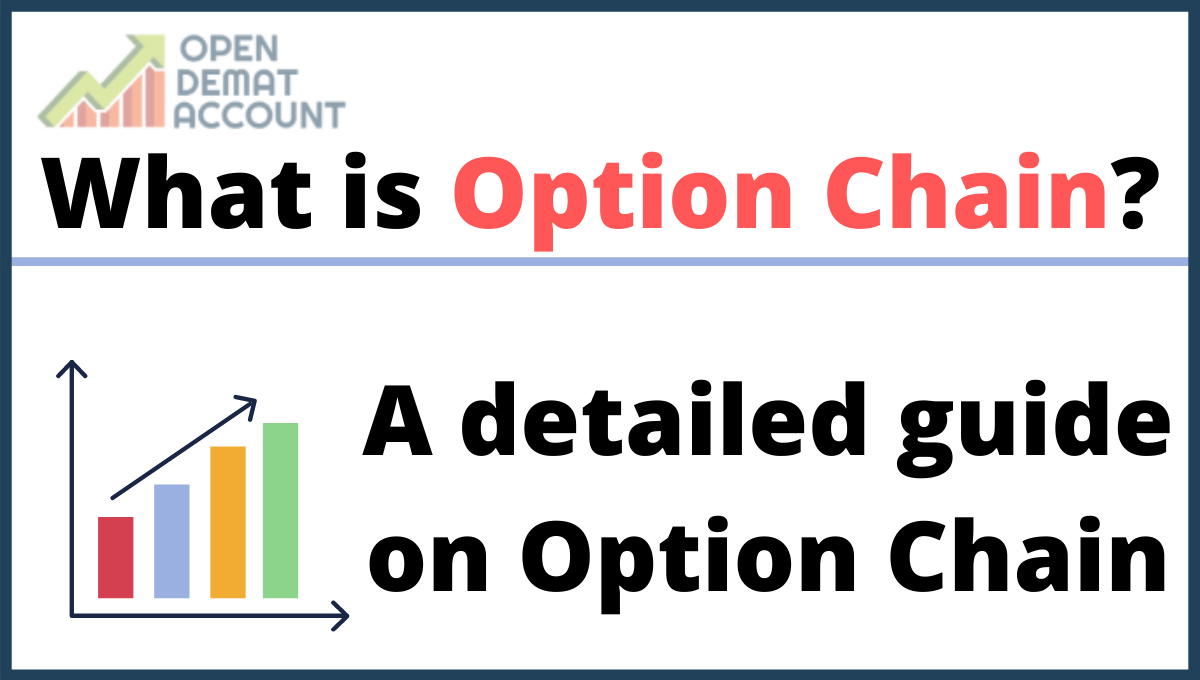What is Option Chain?
Table of Contents
An option chain is a listing of all possible option contracts in both puts and calls for given security. It gives all puts, calls, strike prices, and pricing information for a single underlying asset within a given maturity period. It is also known as an options matrix.
Understanding Option Chain
Option chain is the most common method of giving information for most retail investors. Traders can get an option premium by following the similar maturity dates and strike prices. Depending on the presentation of the data, bid-ask estimates, or mid estimates, are also shown within an option chain.
The majority of online brokers and stock trading platforms display option quotes in the form of an option chain using real-time or limited data. The option chain arrangement allows quick scanning of activity, open interest, and price changes. Traders can set in on the special options required to meet a particular option strategy.
Traders may soon see an asset’s trading action including the frequency, volume of trading, and interest by strike price and maturity months. Filing of data may be by expiration date, soonest to furthest, and then further improved by strike price, from lowest to highest.
You can also click here to learn stock market trading
Understand ITM, ATM & OTM in the Option chain
In-The-Money (ITM): If the strike price is lesser than the current market price of the underlying asset, then the call option is in ITM. If the strike price is greater than the current market price of the underlying asset then the put option is ITM.
At-The-Money (ATM): If the strike price of a Call or Put option is equal to the current market price of the underlying asset then it is in At-The-Money.
Over-The-Money (OTM): If the strike price is greater than the current market price of the underlying asset, then the call option is OTM. If the strike price is less than the current market price of the underlying asset, then the put option is OTM.
Components of an Option chain
There are various components of an Option chain. Now let us understand each component in detail:
1. Options Type: There are two types of Options which are Call and Put. A Call Option is a contract that provides you with the right but not the obligation to buy the underlying at a specified price and within the expiration date of the Option.
A Put Option is a contract that provides you with the right but not the obligation to sell the underlying at a specified price and within the expiration date of the Options.
2. Strike Price: The strike price is the price at which a buyer and seller of the Options agreed to execute the contract. Your Options trade will become profitable only when the price of an Option passes this strike price.
We are also on both sides of the strike prices, data like OI, Chng in OI, Volume, IV, LTP, Net Chng, Bid Qty, Bid Price, Ask Price and Ask Qty. let’s understand each of them in detail:
- Open Interest: Open interest (OI) is a data that implies the interest of traders in a particular strike price of an Options. Open Interest informs you about the number of contracts that are traded but not executed or squared off. If the number is higher, the more is the interest among traders for the particular strike price of an Options. Hence there is high liquidity for you to be able to trade your Option chain when aspired.
- Chng in OI: It informs you about the change in the Open Interest within the expiration period. The number of contracts that are closed, executed or squared off. An important change in OI should be carefully monitored.
- Volume: Volume is another indicator of traders interest in a particular strike price of an Option chain. It shows us about the total number of contracts of an Options for a particular strike price are traded in the market. It is calculated on a daily basis. Volume helps you to understand the current interest among traders.
- Implied Volatility: An implied volatility of an Option chain tells us about what the market estimates on the price movement of the underlying stocks. A higher IV means the potential for high swings in prices and a lower IV means fewer swings in prices.
- LTP: The abbreviation of LTP is Last Traded Price of an Option. It denotes the last traded price of an Option chain.
- Net Chng: It shows is the net change happened in the LTP. If the changes are in positive then it means a rise in price and is indicated in green whereas negative changes are decreasing in price and indicated in red.
- Bid Qty: The Bid QTY of an Option chain is the number of buy orders for a particular strike price. This also gives you information about the current demand for the strike price of Options.
- Bid Price: The Bid price of an Option chain is the price estimated in the last buy order. A price higher than the LTP may propose that the demand for the Options is rising.
- Ask Price: An Ask price of an Option chain is the price estimated in the last sell order.
- Ask Qty: An Ask QTY is the number of open sell orders for a particular strike price. It also gives you the information about the supply for the Options.
Conclusion
A detailed study of option chain can give you a lot of insights on an Option and help you to make an informed decision on your trade.
Open Demat Account
Broker | Rating | Link to Open | |
|---|---|---|---|
Zerodha No.1 Stock Broker in India | ★★★★★ | ||
Upstox | ★★★★ | ||
Angel Broking | ★★★★ | ||
5 Paisa | ★★★★ | ||
StoxKart | ★★★★ |








Leave a Reply